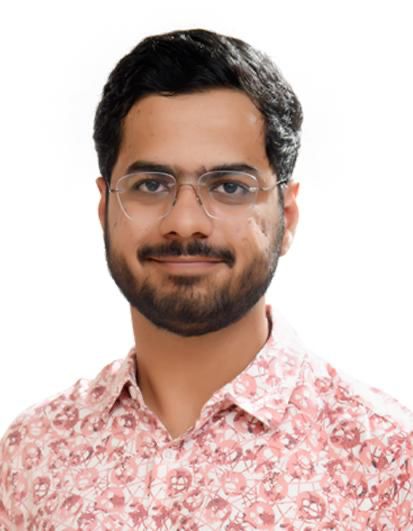Every civilization has expressed itself through art, be it 40,000-year-old cave paintings or modern non-fungible tokens (NFTs).
Anyone who creates art is called an “artist.”
The works of art include Da Vinci’s ‘Mona Lisa’, which is visited by up to 10 million people every year and is now an international treasure, elevating the status of the creator to that of a master.’
This also includes performative exhibitions such as the six-hour “art” by Serbian artist Marina Abramović, in which people insulted her, spat on her or tried to burn her hair.
In short: art, like life, is what we make of it.
While the extremes of art are best left to scientists, soil, the substance we see all around us, is quickly becoming a medium of self-expression.
Not on beaches and open spaces, but artists today isolate earth and use it directly on canvases.
This author met with Aakash Arya, a 26-year-old artist, teacher and creator, to learn more about this medium, but also about the limitations, life and possibilities of an artist.
How did you start working with soil?
“The soil is an experiment for me at the moment because where I come from, a small village in Uttarakhand, there was a strong connection to the soil. I played with it and when I went to a city, that was missing.”
“When I was in fifth grade, we moved to a city and I always regretted leaving the village. When I started art, I painted landscapes. But as I got deeper into art, we tended to approach everything in a minimalist way. I thought my artistic practice was very trapped in Delhi because of the buildings and cemented structures; I always wanted to go back home.”
This led me to find a new material and that is earth.
How can earth become a medium for art?
“There is no specific term for ‘soil art’, but it is my personal choice to work with soil. My mother used soil for housework and I watched her. Maybe that is ingrained in me.”
“The way I follow the process is that I take soil, soak it in water, add cow dung and other materials, and then use it directly on the canvas. Then I layer the soil and repeat the process for a while. Layer by layer, your artwork begins to develop. I used acrylic. When you mix paint and soil, it’s called ‘mix media.’ In the future, I may work only with soil, without any additional paint.”
Are there any well-known artists who have used earth in their works?
“Many other artists work with soil. Kirsten Kurtz is an artist. She works a lot with soil and even has her own soil laboratory (Cornell Soil Health Laboratory, USA). I constantly talk to her and learn. There are many young artists in Shantiniketan who use soil as a medium. But everyone has a different concern. My concern is the mountains, my village and Uttarakhand. The stories are different. I can portray folk art through soil. Others may use the same soil but portray something different.”
What was life like as a freelance artist?
“It has advantages and disadvantages. Sometimes you see a lot of poverty. But sometimes it also feels good because you feel empty inside. I worked alongside college and always thought that I always had a burden on me. For example, when I assist an artist, I only follow the artist’s style and don’t have enough time for my creativity. I even dreamed about school or my job. When you spend all day doing this, you don’t have enough time for yourself.”
“When I quit my job, I realized that if you want to create your own work, you need your own space. Sometimes I have big financial problems, but somehow I manage.”
Do you have any tips on how to better understand abstract art?
“Understanding abstract art is not important, feeling it is more important. What you feel when you see art is important. Our eyes evoke emotions when they see a color. Even when I exhibit my art, people ask me about the theme. I tell them to stand in front of the art, feel it and tell me what emotions they feel. Everything you see evokes feelings in you.”
What do you suggest to an aspiring artist?
“Every field involves hard work. But in these ‘unconventional’ fields, you have to listen to your gut. If you listen to it, everything will be fine. For example, if you love painting but you also need to earn money, we need to listen to your heart at that moment. If you don’t want to take a job, don’t, but you need to earn money somehow in your preferred way. For a budding artist, it is important to create a balance. Not everything can be emotional. We also need to live practically. We need to balance everything, be it art or work. There are no shortcuts.”
There will always be artists in the world, some great, some beginners. From the doodles we make out of boredom to the paintings that sell for millions of dollars, everything is art. But now even the humble ground can be art, provided we use it well.


)

